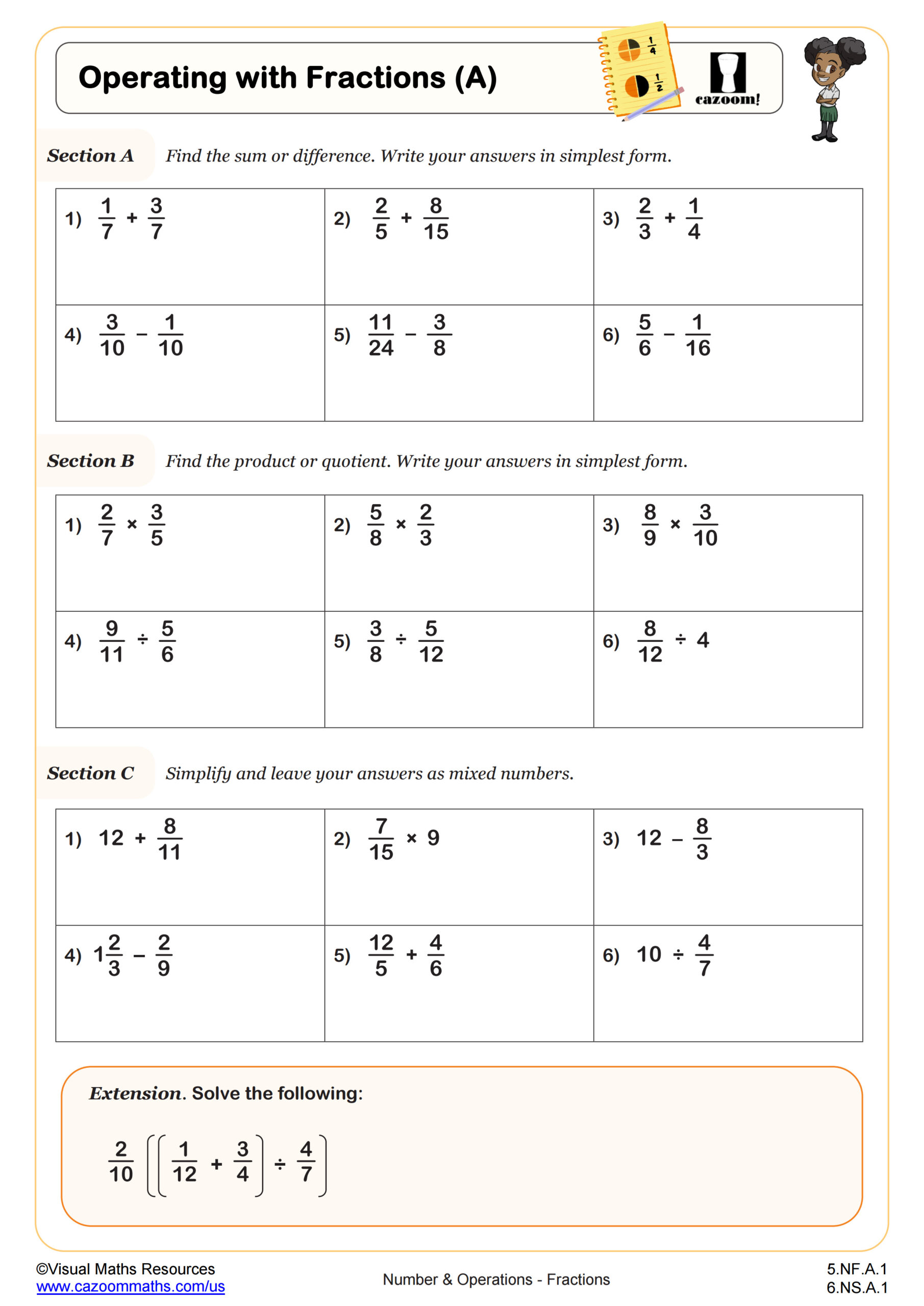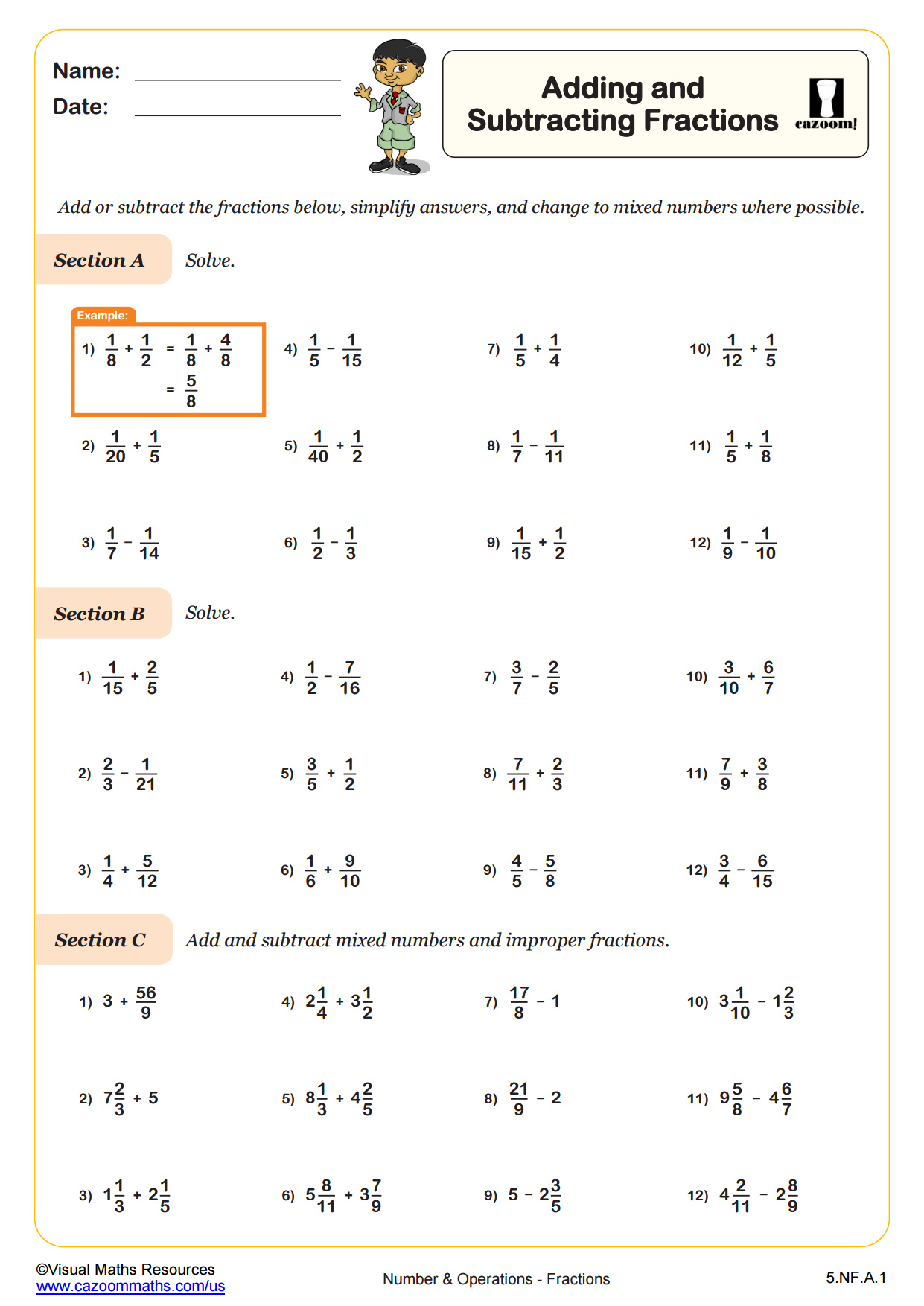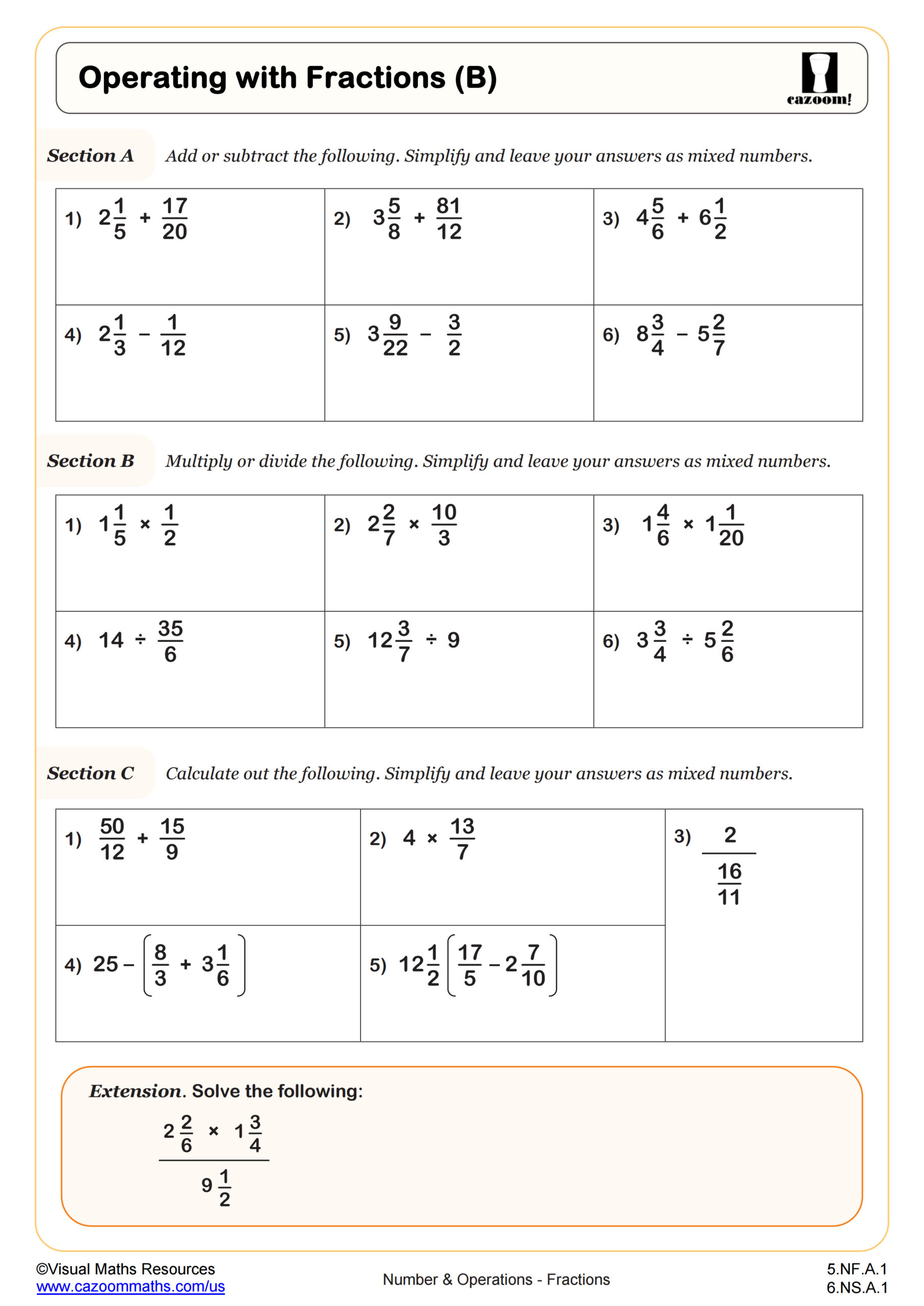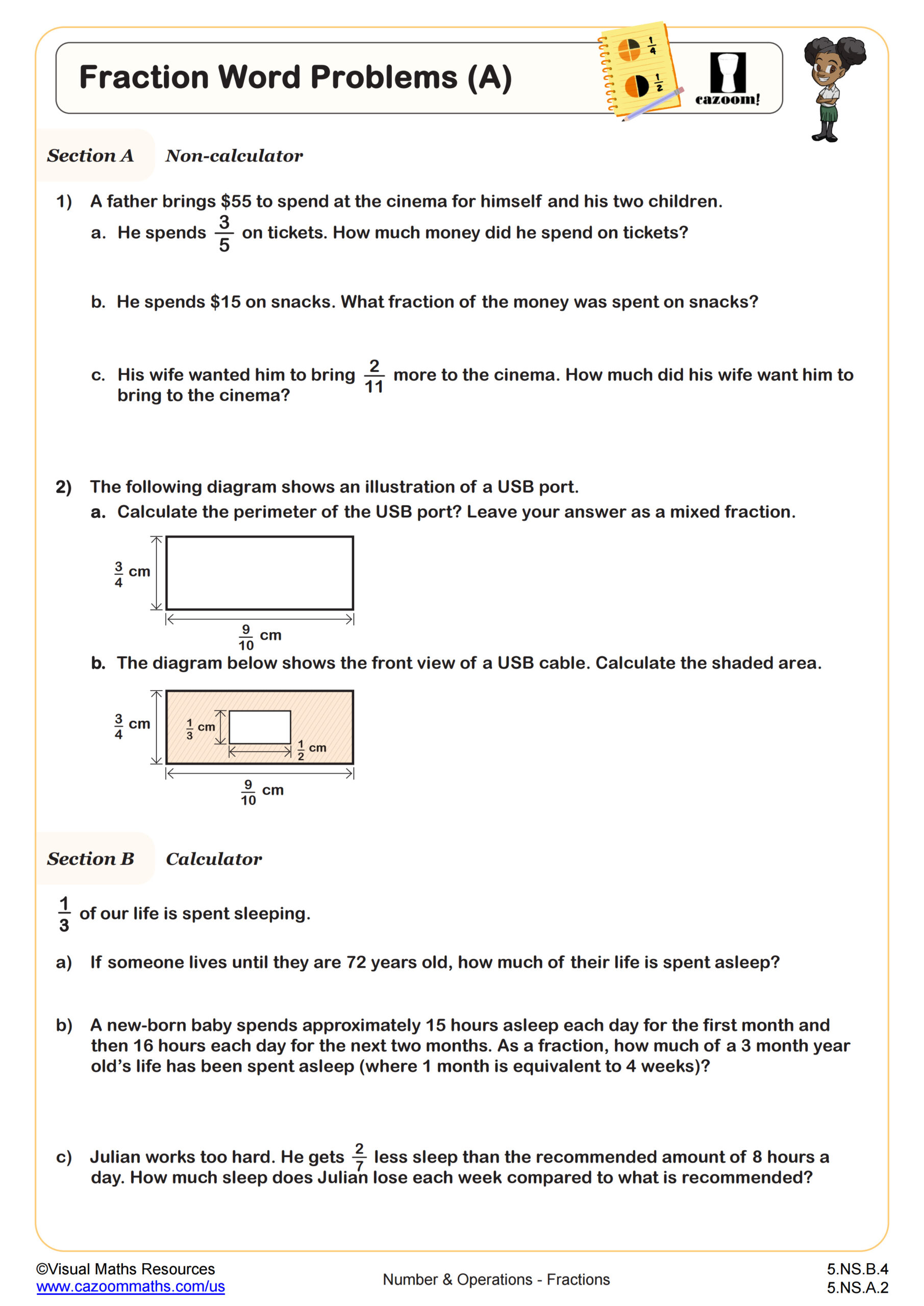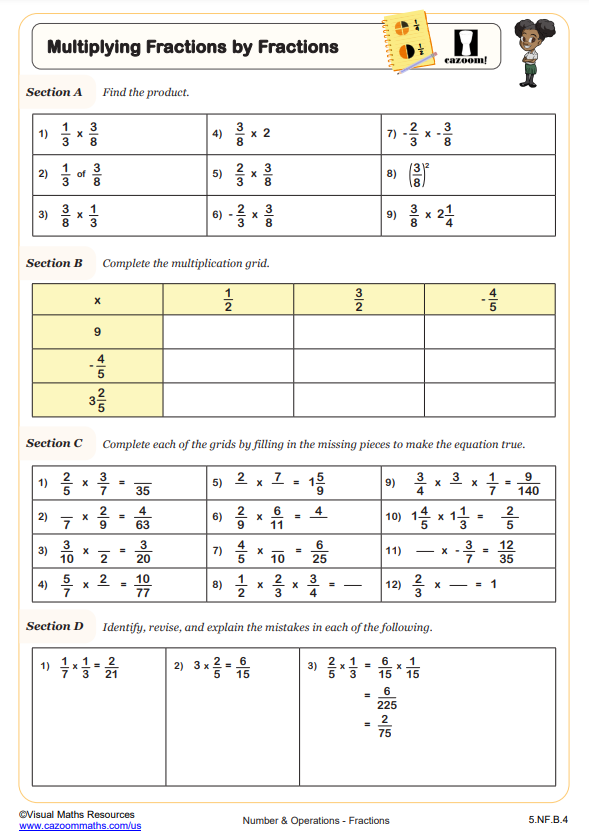Loading...
Back to:
Operations with Fractions (A) WORKSHEET
Suitable for Grades: 5th Grade, 6th Grade
CCSS: 5.NF.A.1, 6.NS.A.1
CCSS Description: CCSS Description: Add and subtract fractions with unlike denominators (including mixed numbers) by replacing given fractions with equivalent fractions in such a way as to produce an equivalent sum or difference of fractions with like denominators. For example, 2/3 + 5/4 = 8/12 + 15/12 = 23/12.(In general, a/b + c/d = (ad + bc)/bd.)
Interpret and compute quotients of fractions, and solve word problems involving division of fractions by fractions, e.g., by using visual fraction models and equations to represent the problem. For example, create a story context for (2/3) ÷ (3/4) and use a visual fraction model to show the quotient; use the relationship between multiplication and division to explain that (2/3) ÷ (3/4) = 8/9 because 3/4 of 8/9 is 2/3. (In general, (a/b) ÷ (c/d) = ad/bc.) How much chocolate will each person get if 3 people share 1/2 lb of chocolate equally? How many 3/4-cup servings are in 2/3 of a cup of yogurt? How wide is a rectangular strip of land with length 3/4 mi and area 1/2 square mi?
Interpret and compute quotients of fractions, and solve word problems involving division of fractions by fractions, e.g., by using visual fraction models and equations to represent the problem. For example, create a story context for (2/3) ÷ (3/4) and use a visual fraction model to show the quotient; use the relationship between multiplication and division to explain that (2/3) ÷ (3/4) = 8/9 because 3/4 of 8/9 is 2/3. (In general, (a/b) ÷ (c/d) = ad/bc.) How much chocolate will each person get if 3 people share 1/2 lb of chocolate equally? How many 3/4-cup servings are in 2/3 of a cup of yogurt? How wide is a rectangular strip of land with length 3/4 mi and area 1/2 square mi?
Operations with Fractions (A) WORKSHEET DESCRIPTION
Operations with Fractions A is perfect to use at the end of a unit on fractions or as a fluency activity on the 4 operations with fractions.
Section A requires students to add and subtract fractions, remembering to simplify their answers where appropriate.
Practice multiplication and division with the following 6 questions in section B.
Section C ensures students are capable of switching between the methods of each operation while not making mistakes, such as finding a common denominator before multiplying.
There is even a tough extension question that requires learners to consider the order of operations involving parenthesis alongside fraction addition, division, and multiplication.
